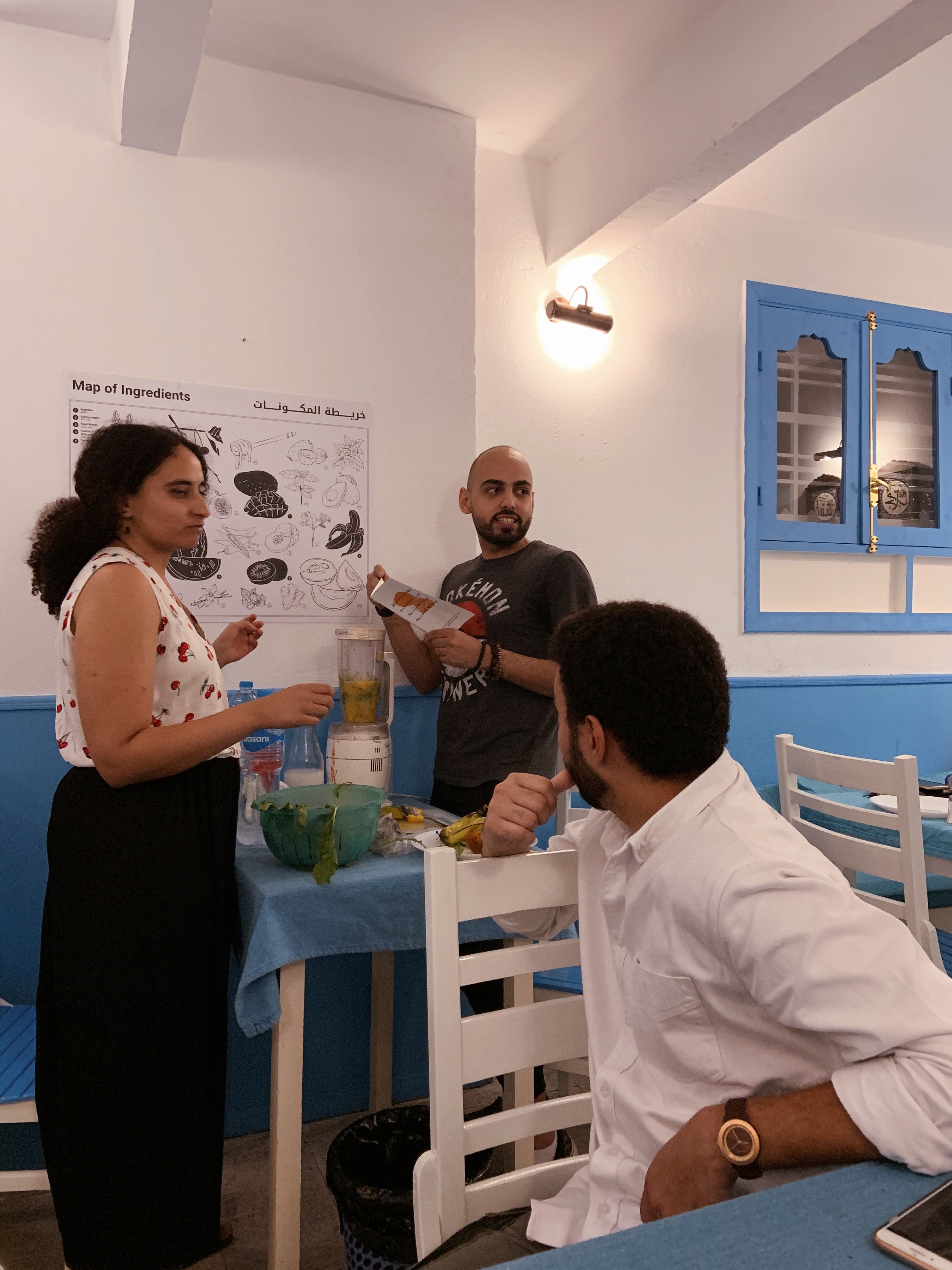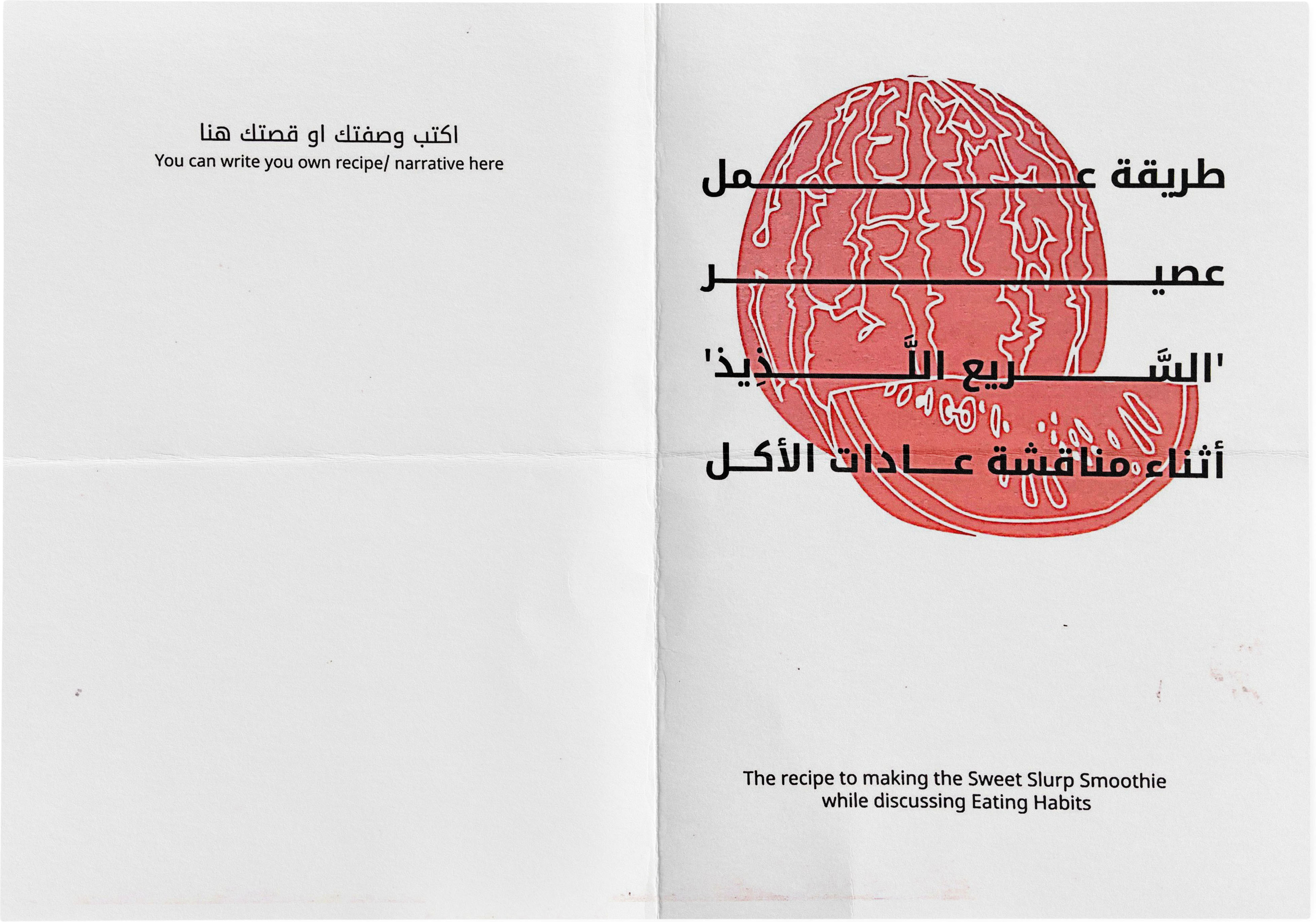2019/ Room
︎ Fasahet Somaya
Co-hosted by Omar Kassab
“Not a Kitchen” is a room that invites regular customers of a local restaurant, through an anonymous poster, to share dinner and have a table discussion while preparing smoothies together. It tries to create another experience of the restaurant by temporarily changing its function and our roles within it.
In order to engage further with food and its role in these social moments, we approached Somaya, the chef and owner of a restaurant in downtown Cairo. After negotiations, she agreed to host the third room in Fasahet Somaya. The small restaurant is a bit submerged under ground level. To get in, you take a couple of steps down and enter through a blue door with glass panels. The walls inside are mostly bare bricks.
Somaya stands behind an open kitchen counter on the left. The wooden counter has a large engraved folk saying that reads, “An onion shared in love is (as satisfying) as a (cooked) sheep.” The cooking utensils decorate the wall, and hand-written sayings, framed old photographs, and an analogue radio give the restaurant an almost domestic feel. There is a hidden extension to the restaurant, which is mostly used when the front area gets full. Out back, the walls are painted white and turquoise. Cushions line up the benches leaning on the wall. White tables and chairs are placed very close to each other. Two small windows open up to the street above.
This room is part of “Chatrooms: On Curating Spaces” in collaboration with Sarah Maher. The project is supported by Mophradat and the British Council in Cairo. Photos by Nadia Ghanem and Mahmoud Khattab, and poster design by Omar Kassab.




We sat in this back area. We made minor changes to its original configuration. We rotated a small table to have its longer side adjacent to the wall, and replaced the clock on the wall with a poster of ingredients. On the small table, we placed a blender, a cutting board, a couple of plates, and knives. We sat on two opposite tables; the big one had benches, and the smaller one only had two chairs which were placed next to the wall. A third table, placed next to the smaller one, was stocked with the ingredients we needed to prepare the smoothies: fruits, greens, herbs, spices, nuts, and water.
The small table seated the duo in charge of preparing smoothies, who were also asked to stir
a conversation by posing questions to the bigger group. The bigger group was seated at the big table, having a conversation. The duo, in a self-choreographed performance, took turns choosing a smoothie from a collection of five recipes; their small table acted as a stage. There were recipes for a mango smoothie, a watermelon smoothie, a banana smoothie, a kiwi smoothie, and a cherry smoothie. The recipes came with a list of curated ingredients, and a list of questions. The questions accompanying the recipes asked about food production and consumption, as well as eating habits and our relationship with food. The cutting, peeling, and blending of the ingredients ended with us tasting the prepared smoothie together.

